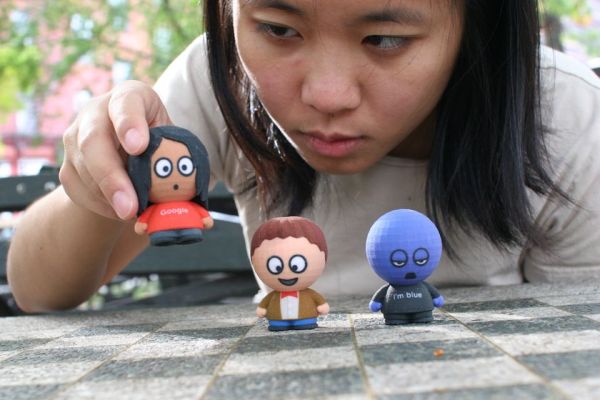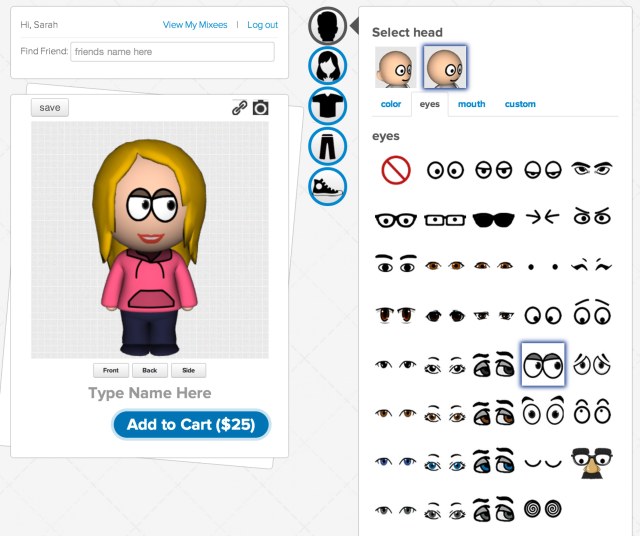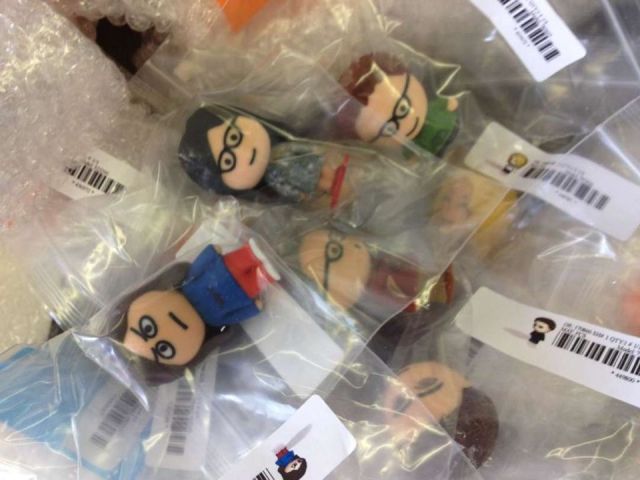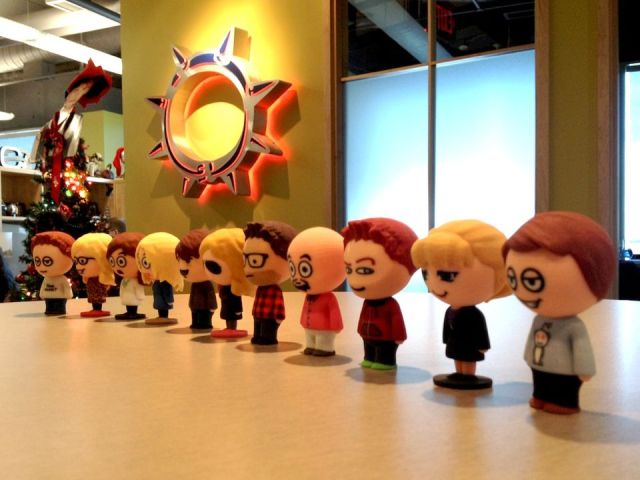Consumer interest in 3D printing is booming, thanks to increasingly affordable printers, crazy stories about 3D-printed candy, human ears and handguns, all of which are impressive technological leaps. But 3D printing is fueling artists’ creativity, too, whether those artists are formally trained experts or self-taught newcomers, finding their way around by watching YouTube tutorials.
This is part three of an ongoing series which will showcase some of the art that’s being created by the ever more accessible 3D-printing technology, and the artists behind the work. In part one, we profiled a formally trained artist who was inspired to use 3D printing for her work, after first coming across the technology years ago. In part two, we looked at a self-trained artist’s jewelry-making.
Although the results of 3D printing are gaining mainstream awareness and praise, consumers are still somewhat removed from the creation process. They’re browsing through galleries on Etsy and Shapeways, shopping on e-commerce sites filled with 3D-printed goods, or even coming across the work offline in stores and museums.
One company called Mixee Labs is trying to change that by bringing the consumer into the design process, starting with fun and whimsical “mini me” creations — little 3D-printed characters that are as easy to build as a Wii Mii using Mixee’s own simple online software.
Part 3: The Company Turning Consumers Into Artists
When Mixee Labs co-founder Nancy Liang was little, she dreamed of making herself into an action figure. “I had this notion that if you could become an action figure or become a toy, you’ve made it in the world,” she explains.
Years later, her ongoing interest in technology and design led her to a job as the materials lead at Shapeways, a company that could help her make those childhood fantasies come true. The startup, founded in 2007 as a spin-off of Royal Philips Electronics, today offers 3D-printing resources, an online shop, and a way for anyone to use its network of facilities to print out their own 3D creations.
Liang had heard about Shapeways around the time of its Series A round and thought it would be a great place for “normals” like herself to participate in design, even if lacking a professional background. Angling for a position there, she hung around the Shapeways booth at Maker Faire until the CEO showed up, then handed him her resume and talked her way into a job.
She ended up as the first hire in the company’s New York location.
But when later trying her own hand at 3D object creation, Liang ran into a hurdle.
“I started to learn how to 3D model and — lo and behold! — it’s not as easy as you think it is,” she says with a laugh. “I spent five hours at my computer trying to make this action figure that looked nothing like me,” she says. “That was my first foray into 3D printing, and also the inspiration behind Mixee Me.”
Not a designer herself — or even very crafty, for that matter (“I tried to design a shirt once — you know, sewing — but learned that I’m better with the computer,” she says), Liang still believes in the potential that 3D printing brings to the hobby crafting market. But she also saw that there was a hole that needed to be filled to make that happen.
The gap lies between the accessible printing technology and the software needed to translate ideas into computer-understandable designs, which pushed Liang along with technical founder Aaron Barnet into starting Mixee Labs late last year. The company’s goal is to make it easier for everyone to make something and then have it printed in 3D format. Its first products are the cute little figurines Mixee’s customers create online using the company’s software.
“We wanted something that people could relate to — everyone has friends and family they could make miniatures of — and we wanted something that was easy to use. Rather than worrying about angles and inverted normals and polygons, you have to select from ‘angry eyes,’ ‘happy eyes,’ ‘blonde hair’ – it’s very intuitive,” Liang explains.
Within its first month, the Mixee Me store was one of the top five shops at Shapeways. However, the company declined to provide exact sales figures.
~~~
Beyond “Mini Me’s”
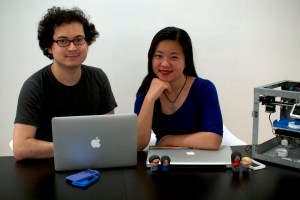 In some weeks’ time, the company is launching a platform that will allow customers to design even more things beyond the figurines, which today people tend to buy as wedding-cake toppers or silly gifts for co-workers. Using customizable design templates sourced from professionals, online shoppers will be able to use intuitive web software to quickly adjust a base template to their liking then have it printed via Shapeways.
In some weeks’ time, the company is launching a platform that will allow customers to design even more things beyond the figurines, which today people tend to buy as wedding-cake toppers or silly gifts for co-workers. Using customizable design templates sourced from professionals, online shoppers will be able to use intuitive web software to quickly adjust a base template to their liking then have it printed via Shapeways.
The bigger question, however, is whether or not people will actually want to participate in the creation process of things like jewelry or housewares, or whether they’re only drawn to the idea now while the idea of 3D printing is newly buzzy.
Liang, of course, thinks 3D printing will live beyond the hype cycle.
“I think this is going to change the way people think about products. People are going to be able to participate in the way their stuff is designed,” she says. “I think what is going to take it from early adopter to mass adoption — and this is a big problem, but an interesting one — is to make it more about things that average people care about…there are a lot of products that show off the technology very well, but aren’t as relatable to everyday people,” Liang adds.
“One of the things we wanted to do [with Mixee Me] was create something that was relatable, something that was customizable and something that was easily customizable. I think you really need all three to cross that gap between early adopters and mass consumers.”
